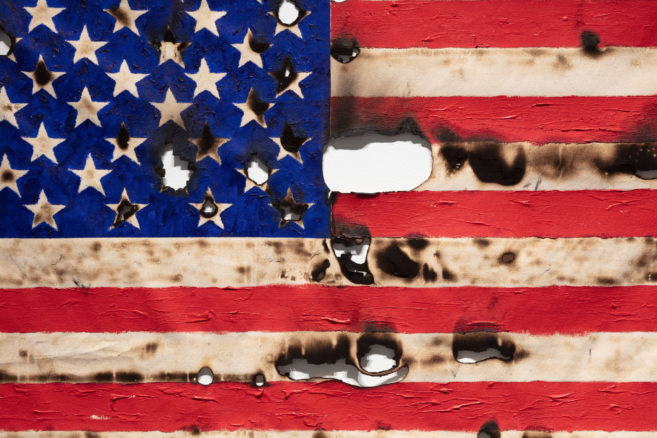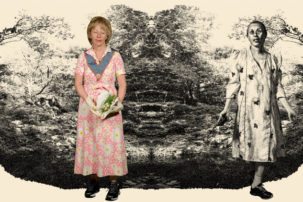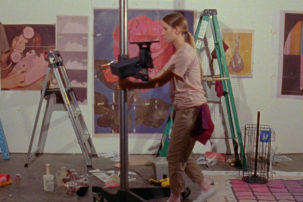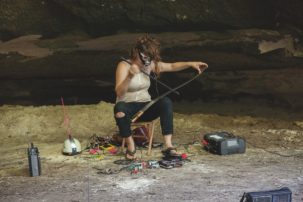In early September, a massive fire left Brazil’s National Museum in Rio de Janeiro in rubble. In the immediate aftermath, front-page images of the 200-year-old building in flames turned into images of protest, and the extensive losses of cultural heritage came to symbolize the failures of a government that hadn’t maintained one of the country’s most important institutions. The lack of infrastructure was shocking: many of the nearest fire hydrants, which could have prevented the spread of the fire, were dry.
The 33rd Bienal de São Paulo officially opened to the public five days later, coincidentally the same day local media reported that far-right presidential candidate Jair Bolsonaro had been stabbed in public. The so-called Brazilian Trump has made racist, sexist and homophobic comments comparable to his American counterpart and, as I naively realized on my first trip to São Paulo, the alarming rise of populist conservatism is a global phenomenon.
Against this backdrop of divisive politics, social contestation, a persistent recession and now a decimated national museum, curator Gabriel Pérez-Barreiro’s biennial entitled “Affective Affinities” attempts to eliminate the hierarchy and didacticism of thematic, single-curator exhibitions. Instead, seven artists with diverse practices—Mamma Andersson, Antonio Ballester Moreno, Sofia Borges, Waltércio Caldas, Alejandro Cesarco, Claudia Fontes and Wura-Natasha Ogunji—were invited to develop exhibitions that would reveal their individual artistic affinities: that is, to show works that align with their various practices and tastes. This horizontal model was ostensibly to allow “themes and relationships to emerge organically from the process of exhibition-making, rather than starting with preconditioned ideas.” Radical a gesture as this may be, the artist-driven approach produced an exhibition that was relatively conservative, in both form and content. With comparatively few women and artists of colour, the lack of diversity was surprising, particularly given the complexities of Brazil’s racial, linguistic and cultural diversity. Brazilian sculptor Waltércio Caldas’s section, for example, included spaces teeming with geometric, minimal abstraction but with few works by women artists; among works by Anthony Caro, Bruce Nauman, Richard Hamilton and others, Caldas boldly claimed to need no “curatorial operation” in order to exercise his aesthetic preferences. But does this focus on preference, or on the shaping of individual artistic legacies, offer a true challenge to the large-scale thematic group exhibition model, as the organizers claim? If anything, the focus on artistic affinity seemed to offer a contradictory counter-argument: there was a clear need for a stronger curatorial hand.
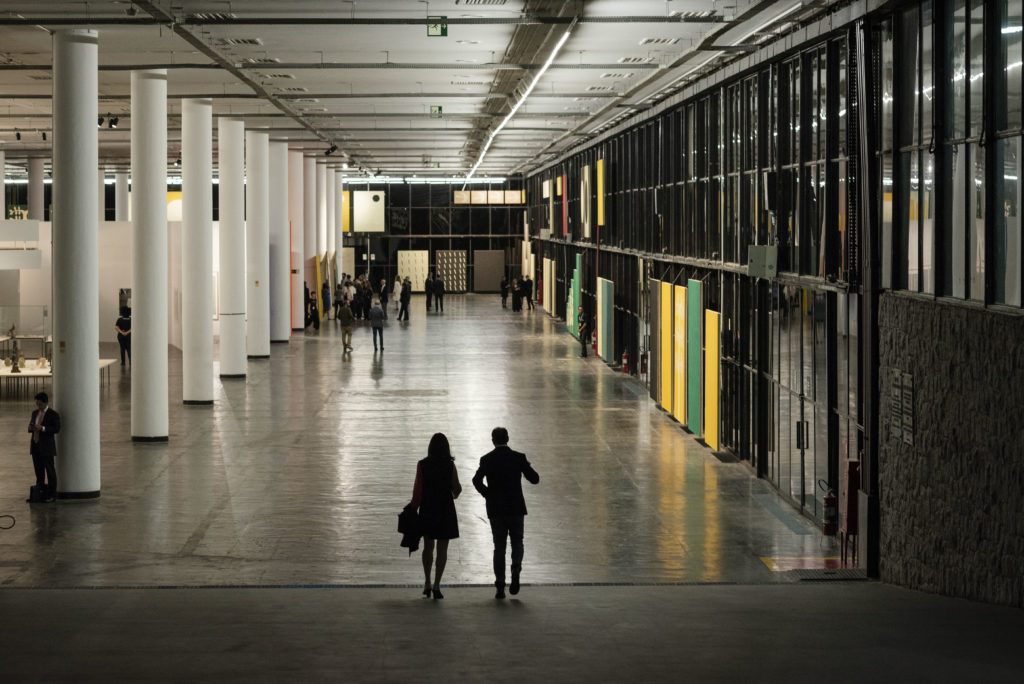
Exhibition view of the 33rd Bienal de São Paulo. Courtesy Leo Eloy / Estúdio Garagem / Fundação Bienal de São Paulo.

Installation view of Waltercio Caldas's"Os Aparecimentos / The Appearances" at 33rd Bienal de São Paulo.
The biennial is situated in a massive, Oscar Niemeyer–designed building in lush Ibirapuera Park. Many works felt small in the soaring glass spaces, particularly on the spaciously installed ground floor, and it wasn’t clear if the effect of the forest visible through the windowpanes was intentional. Mark Dion’s taxonomic workshop installation, where local artists recorded and painted (in the tradition of 19th-century fieldwork) plant species gathered from the surrounding park, smartly engaged histories of representation in artistic and scientific research but could be easily overlooked amid the towering trees themselves. Nearby, the installation by Antonio Ballester Moreno of ceramic mushroom-like forms, made in collaboration with local schools, similarly engaged the specifics of the biennial pavilion, in particular connecting early education with the garden through the inclusion of work by kindergarten inventor Friedrich Fröbel. Still, its most elegant aspect was the view through the glass to the lush exterior.
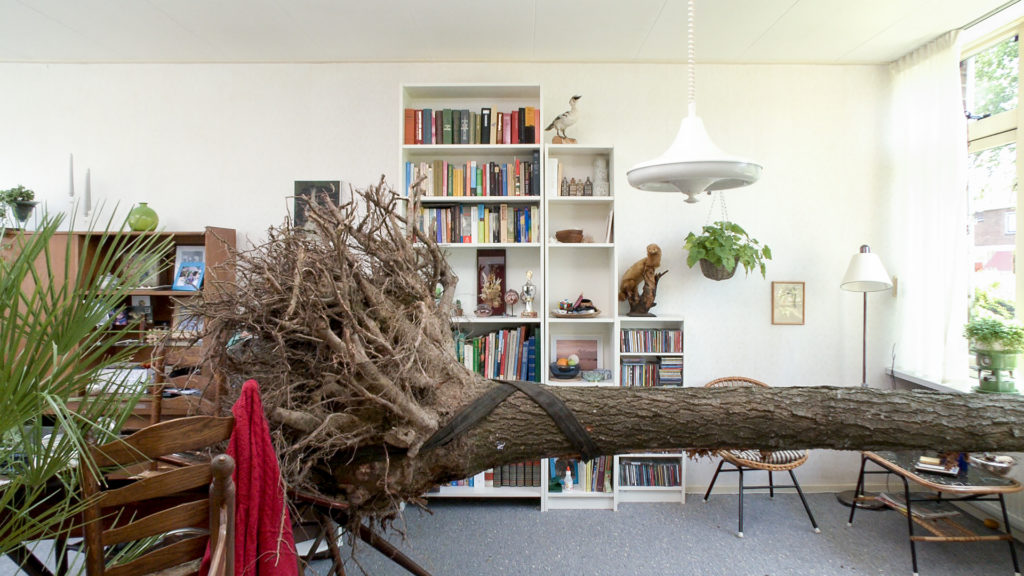
Roderick Hietbrink, The Living Room, 2011. HD video 7:54 min. Courtesy the artist and Stedelijk Museum, Amsterdam.

Installation view of Claudia Fontes's "The Slow Bird" at the 33rd Bienal de São Paulo. © Leo Eloy / Estúdio Garagem / Fundação Bienal de São Paulo.
Upstairs, Claudia Fontes’s exhibition “The Slow Bird” had a tightly focused if unusual curatorial approach, and was one of the strongest for it. Each of the artists had a visual and a literary cue to work from: the image of slowness in flight; a response to the question of whether a bird can experience vertigo; Edgar Allan Poe’s seminal detective story, “The Purloined Letter,” about translation and miscommunication. What sounds at first like a bizarre curatorial premise produced a poetic, thoughtful exhibition that was consistent in its engagement with the relations between humans and non-humans. Fontes’s own work was an elegantly laid table containing thousands of ceramic shards, each having been broken by a flock of birds (seagulls) who pecked, dropped and smashed them. Individually wrapped in cloth and then tagged with a single word, the work scrambles the text of an original narrative to produce a different kind of poetic experience, one formed through the actions of both bird and viewer. Ben Rivers’s slow-moving, psychedelic, 16mm film installation showing a close-up view of a sloth in the jungle and Roderick Hietbrink’s video of an oak tree being dragged through a cramped living room could both be read as accounts of the slow revolt of the forest, visual metaphors for the persistent power of the natural world, which will certainly outlast human-built structures.
![Tunga, <em>Sem título [Untitled]</em>, 2014. Iron tripod, ceramic, bronze, sea water stones, mirror. Courtesy Instituto Tunga, Rio de Janeiro](https://canadianart.ca/wp-content/uploads/2018/10/IMG_8635-e1538493027497-768x1024.jpg)
Tunga, Sem título [Untitled], 2014. Iron tripod, ceramic, bronze, sea water stones, mirror. Courtesy Instituto Tunga, Rio de Janeiro
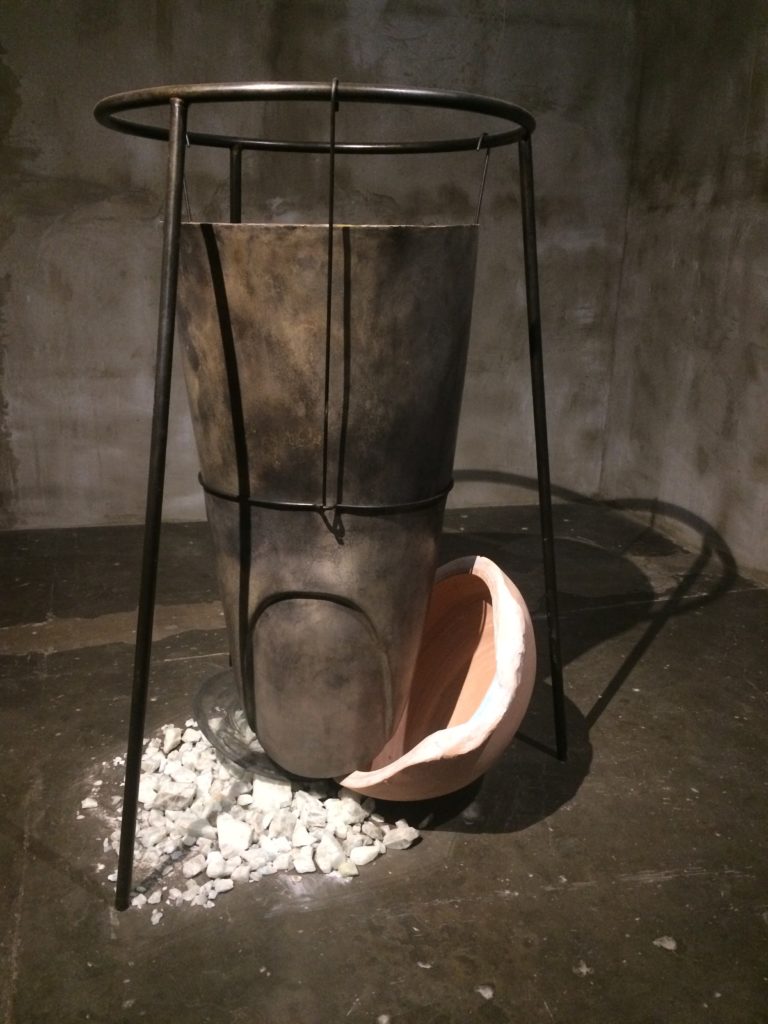
Lhola Amira, Philisa: Hlala Ngikombamthise , 2018. Performance as part of Wura-Natasha Ogunji's exhibition "sempre, nunca" at at 33rd Bienal de São Paulo.
Sofia Borges’s maze-like exhibition structure held space for more intimate, human-scaled engagements. The late Brazilian artist Tunga’s alchemical installations of elemental forms and geologic references were pure material pleasure, while Leda Catunda’s large, textile “soft paintings,” all drippy tongues and shimmery cloth in proximity to Sarah Lucas’s signature deformed sculptures were welcome reminders of the pleasures of the body. Under the iconic curved walkway, Tal Isaac Hadad’s Recital for masseur (recital para um massagista) offered the most to its audience: a group of singers sustained long, drone-like melodies as they were each massaged, their collective song swelling and receding in relation to the pressures of touch. Resonant throughout the space, it was a stunning comment on the need for care—of both audiences and artists. In Wura-Natasha Ogunji’s exhibition, South African artist Lhola Amira offered elegantly staged rituals as she washed and massaged the feet of visitors and graciously, slowly, precisely traversed a dark red space in what she calls “appearances,” rather than a performance. At the opposite end of the same floor, Sara Cwynar’s Red Film asked audiences to sit with the colour red to very different ends. Engaging a wide-ranging, deeply theoretical history of colour in beauty, consumerism and capitalism, Cwynar’s work ultimately challenges viewers to reconsider visual primacy in the digital world.
All these exhibitions felt very much separate—as well as aloof and disconnected. Pérez-Barreiro stressed that the artist-curated exhibitions could be, and should be, read entirely independently—but with a thematic on affinity, why force it? Why maintain that the artist-curators should work entirely autonomously and without knowledge of the others’ projects, rather than see what connections might be developed between them? If affinities of affect are sought, as the title implies, why not also look for political, social affinities rather than the formal affinities that many of the sections produced? In times of uncertainty, it seems it may be easier to avoid responsibility, which is what this felt like—a response to the failures of governance that ignores the responsibility to act. If no one is in control, is anyone accountable? Diversity mandates can be as problematic as they are productive, because inclusion alone doesn’t necessarily address the politics of exclusion and division. But, without responsibility to an overall vision, an exhibition of this scale risks reproducing the difficult realities of political, class and racial inequality that Brazil—and Canada, and many other countries—currently struggle with.
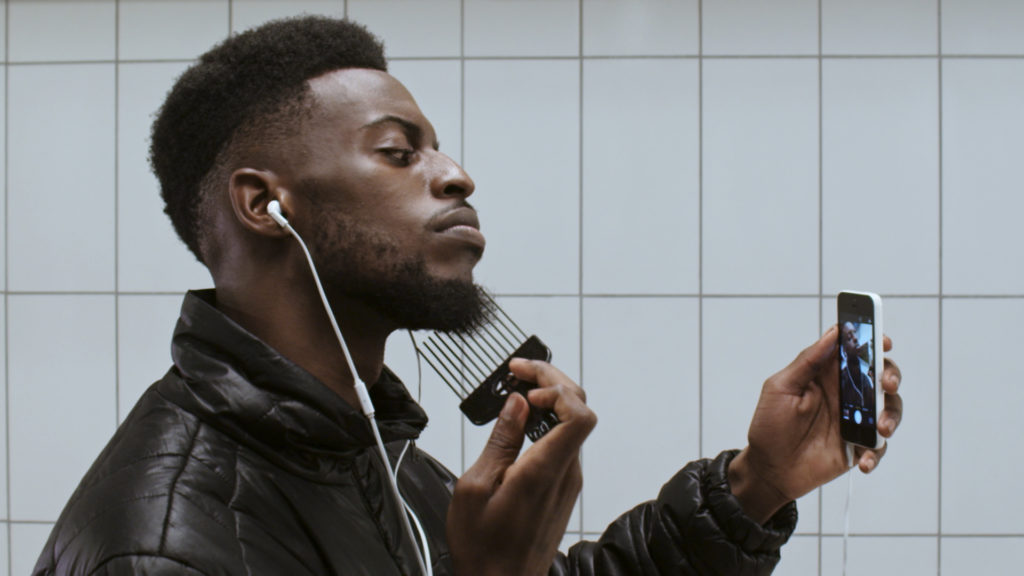
Bárbara Wagner & Benjamin de Burca, RISE, 2018. Video 2K, color, sound, 20 minutes. Courtesy the artists and Fortes D’Aloia & Gabriel, São Paulo/Rio de Janeiro.

Bárbara Wagner & Benjamin de Burca, RISE, 2018. Video 2K, color, sound, 20 minutes. Courtesy the artists and Fortes D’Aloia & Gabriel, São Paulo/Rio de Janeiro.
Elsewhere in São Paulo, I found the affinities that seemed lacking at the Bienal Pavilion. Bárbara Wagner and Benjamin de Burca’s exhibition RISE at Fortes D’Aloia & Gabriel more successfully achieved the biennial’s aims of non-hierarchical curation, experimental engagement and creating environments for communicating and connecting. Ostensibly about poetry but in large part about shared human experience, their film installation is an operatic documentary-fiction that follows performers through the futurist-looking Toronto subway system—its hollow subterranean spaces filled with words of empathy, love, grief, loneliness, disconnection and the anxious temperament of how one should live.
As de Burca and Wagner put it, the artwork is not the film but the process itself. It was produced in collaboration with a group of poets and musicians from Scarborough’s RISE Edutainment, and commissioned by Emelie Chhangur and the Art Gallery of York University. De Burca and Wagner lived and worked in North York and Scarborough, journeying significant distances through Toronto’s transit system to understand the poetic practices of a community of artists whose work is purposely practiced outside the frequently downtown-oriented contemporary art world.
A story told in transit, RISE is very much a narrative of civic resilience within communities that refuse to be defined by struggle. The cast wrote and performed their own works—rapping, speaking and singing across four acts, bookended with the “everywhere” voice of poet Duke Redbird, who appears as an apparition in the transit booth but feels present from overture to epilogue. Even, or especially, when it verges on the sensibilities of science fiction, the film retains narratives of human experience that are purely poetic and entirely honest without feeling “raw” or exposed. It is a film of voices, of collaboration, and demonstrates what is possible when a project is produced through finding affinities, not made about them.
In the end, the idea of affinity continued to resonate for me because it is a concept and a position formed by relating to others, by making commitments and developing relationships, and perhaps that is simply not an idea well-suited to a large-scale exhibition. In RISE, a scene of two strangers passing each other on escalators travelling in opposite directions powerfully encapsulates the poetic and aesthetic urgencies of art-making: “I’ve always been envious of birds,” one speaks. “Humans watch each other dance and sing and call it art. Birds watch each other dance and sing and call it survival.”
Bárbara Wagner and Benjamin de Burca’s RISE is at Fortes D’Aloia & Gabriel until Oct. 6, 2018 and at CONTACT Gallery until Oct. 20, 2018 as part of Communities of Love, an exhibition curated by Emelie Chhangur that also features a series of commissioned photographs by Anthony Gebrehiwot.
The 33rd Bienal de São Paulo, Affective Affinities, runs until Dec. 9, 2018.

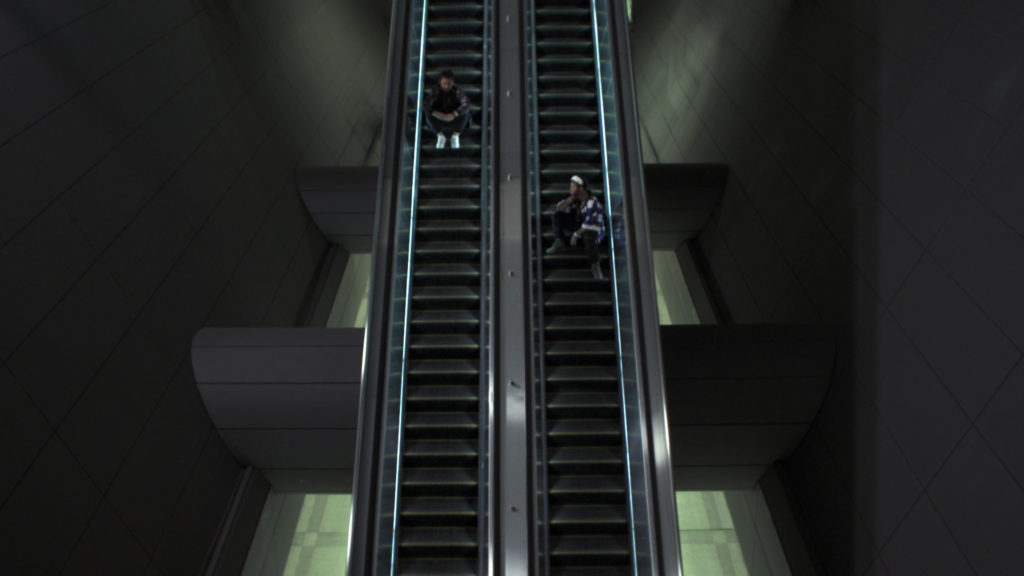 Bárbara Wagner & Benjamin de Burca, RISE, 2018. Video 2K, color, sound, 20 minutes. Courtesy the artists and Fortes D’Aloia & Gabriel, São Paulo/Rio de Janeiro.
Bárbara Wagner & Benjamin de Burca, RISE, 2018. Video 2K, color, sound, 20 minutes. Courtesy the artists and Fortes D’Aloia & Gabriel, São Paulo/Rio de Janeiro.
